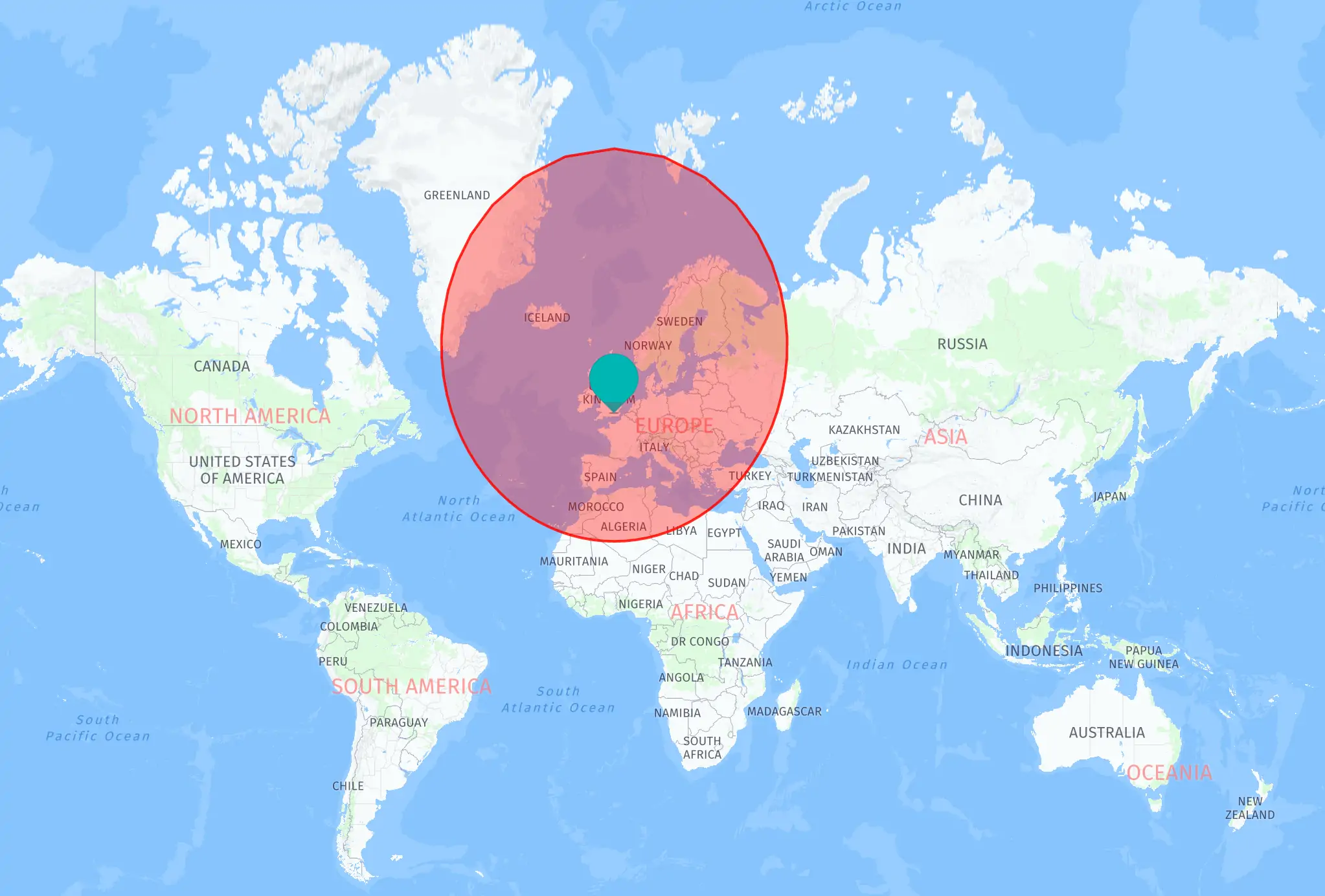1988 – 1991
Key Facts
- The Bombardier Learjet 31 is a Light jet manufactured by Bombardier between 1988 and 1991.
- The Bombardier Learjet 31 is powered by two Honeywell TFE731-2 engines, resulting in an hourly fuel burn of 177 Gallons per Hour.
- Capable of cruising at up to 451 knots, the Bombardier Learjet 31 can fly non-stop for up to 1631 nautical miles.
- The aircraft can carry up to 8 passengers.
- The Bombardier Learjet 31 has an estimated hourly charter price of $2950, with a new list price of $4.5 million at the time of manufacture.
Overview and History of the Learjet 31 Business Jet
The Bombardier Learjet 31 (LJ31) is a light private jet that was produced from 1988 to 1991. At the time the lineup was not owned by Bombardier so was simply a Learjet or Gatest Learjet 31.
The first flight of the 31 took place in 1987, with deliveries starting just one year later. Learjet is
Learjet’s legacy dates back to the mid-20th century when their first aircraft took to the skies. However, it was the introduction of the Learjet 31 that marked a significant milestone in their journey of innovation.
The development of the Learjet 31 was an ambitious project from the outset. The goal was to create a jet that could outperform its contemporaries in terms of speed, range, and comfort, all while adhering to the stringent regulations of the light aircraft category.
The engineers at Learjet rose to the challenge, utilizing cutting-edge technology and design principles to bring the vision of the Learjet 31 to life.
In the early 1980s, the Canadian multinational Bombardier Inc. recognized the potential of Learjet and acquired the company in 1990.
Variants of the standard model are the Bombardier Learjet 31A (introduced in October 1990) and the extended range Learjet 31AER. The first 31A was delivered in 1994.
Performance & Engines
At the rear, the Learjet 31 is powered by two Honeywell TFE731-2 turbofans, which provide a combined thrust output of 7,000 lbs (3,175 kg), enabling the aircraft to achieve impressive speeds.
The jet can reach a maximum high-speed cruise of 451 knots (835 km/h), while its long-range cruise speed stands at approximately 417 knots (772 km/h).
The Learjet 31’s outstanding performance capacity is not limited to just speed. The aircraft’s operational maximum cruise altitude is a noteworthy 51,000 feet (15,545 meters), allowing it to soar above most commercial traffic and weather disruptions.
For the time and especially for the class of aircraft, this exceptionally high altitude is extremely impressive.
Furthermore, the jet’s range of 1,631 nautical miles (3,021 kilometers) affirms its ability to cover long distances without the need for frequent refueling stops.
Ground performance is equally admirable, with a take-off distance of 3,490 feet (1,064 meters) and a minimum landing distance of 2,507 feet (764 meters), showcasing the aircraft’s suitability for operation in a variety of airfields, including those with shorter runways.
It’s important to note that these performance figures represent best-case scenarios. Factors such as weather conditions, altitude, temperature, and aircraft weight greatly affect the aircraft’s range and ground performance. Therefore, actual performance may vary.
Learjet 31 Interior
On the inside the space is well utilized despite being a small cabin.
The interior of the fuselage measures 12.9 feet (3.9 meters) in length, 4.9 feet (1.5 meters) in width, and stands 4.3 feet (1.3 meters) tall, offering a total cabin volume of 268 cubic feet. This thoughtful design comfortably accommodates up to eight passengers, although a typical configuration seats six.
Promising an enjoyable flight experience, the cabin is equipped with a variety of amenities. A hot and cold drink facility adds a touch of home, while the impressive space ensures freedom of movement. For convenience, a toilet facility is also included.
The seating arrangement takes center stage: a three-seater divan in club-style layout and four adjustable Erda seats, complete with folding tables. This versatile setup offers passengers the flexibility to work or relax during the journey.
Storage won’t be an issue on the Learjet 31, as the baggage space accommodates up to six bags, assuming an average luggage size of less than 5 cubic feet.
The aircraft also boasts impressive cabin altitude capabilities. The cabin can maintain a sea level atmosphere up to an altitude of 25,700 feet (7,833 meters), and the maximum cabin altitude is a comfortable 7,800 feet (2,377 meters).
These features contribute to reduced passenger fatigue, making the Learjet 31 an excellent choice for both short and long journeys.
LJ31 Cockpit
The Bombardier Learjet 31, being a light jet, is often perceived to have a somewhat compact cockpit.
However, the design is incredibly efficient, making optimal use of the available space. The cockpit is outfitted with a Collins avionics system and dual KFC 3100 two-axis autopilot.
This offers comprehensive flight information and enhances navigation capabilities, improving overall flight safety and efficiency.
The aircraft also features the Collins FIS-84 EHSI and the ALT-55B, which offer superior altitude reporting and control. For audio needs, the Learjet 31 comes equipped with dual Collins DB-415 audio systems.
The presence of dual JET VG-206D VG and a JET emergency system with a battery ensures reliable performance and safety.
The cockpit also boasts dual Teledyne IVSI, which offers vital vertical speed information. It includes dual Davtron 877 clocks for accurate timekeeping. Additionally, the cockpit also features a Bendix King RDS-81 radar
Lastly, the LS Collins ADI-70 gyro provides precise attitude information, making it a crucial part of the overall flight control system. Even though the cockpit may seem compact, it is packed with high-tech equipment designed to enhance the flight experience of the pilots.
Charter Cost
Chartering the Bombardier Learjet 31 in North America is estimated to cost around $2,900 per hour.
It’s important to keep in mind that this is a general estimate, and the actual cost may vary. The charter cost of an aircraft is influenced by several factors.
These include the length of the trip, the duration of the stay, the number of passengers, and even the time of the year.
Additionally, operational costs such as fuel, maintenance, and crew expenses also play a significant role in determining the final charter cost. Therefore, while the Learjet 31 offers an attractive entry point for charter costs, the exact price will depend on the specific details of your trip.
Purchase Cost
The Bombardier Learjet 31 originally held a price of $4.5 million when purchased new.
However, the market for pre-owned Learjet 31s presents a more affordable alternative, with the average price hovering around $600,000. Within the world of private aviation, this is an incredibly reasonable price. However, there are many considerations with an aircraft at this price point and of this age.
It is also vital to consider the annual operating costs of any private jet but especially of one from this era. Naturally, with an aging airframe maintenance will be required often which will increase costs and increase downtime.
For instance, if you plan to fly your Learjet 31 for about 200 hours per year, the estimated annual ownership cost, incorporating factors like maintenance, fuel, and insurance, is expected to be around $800,000








